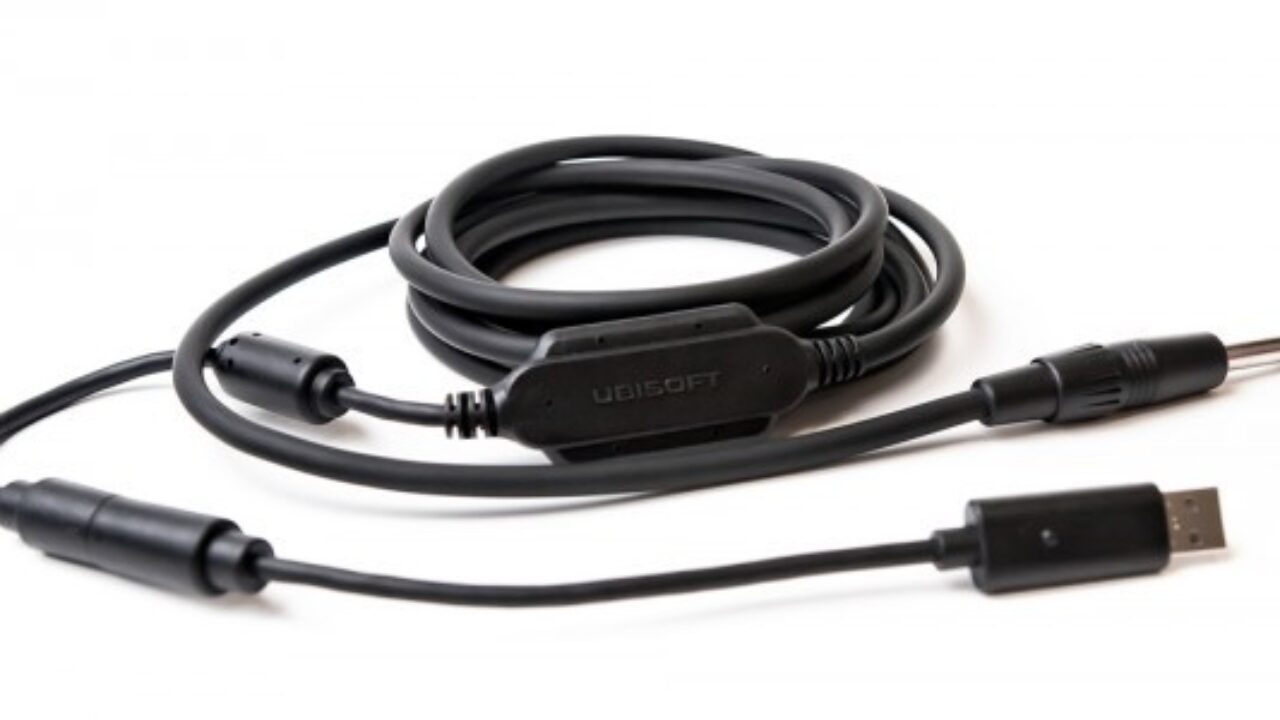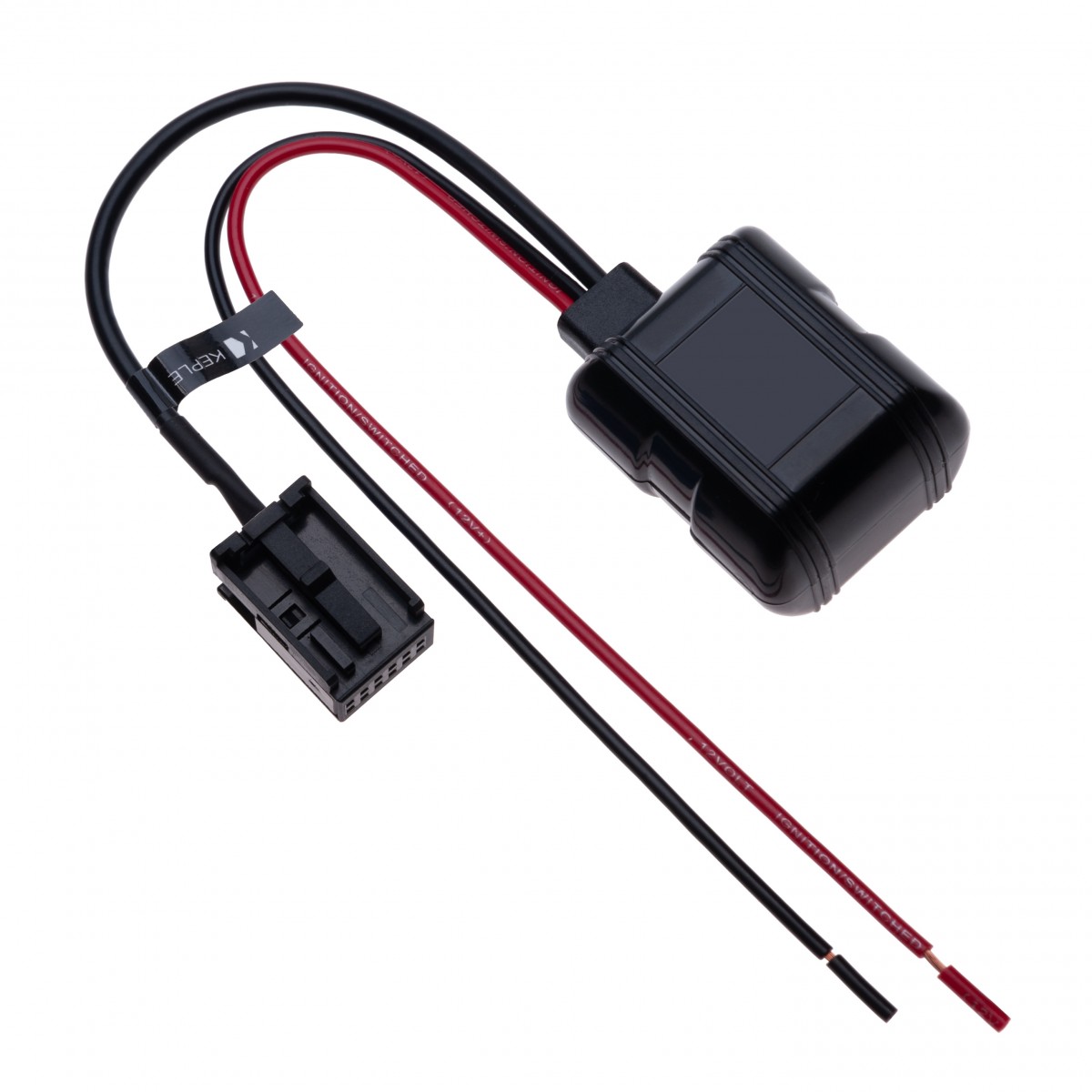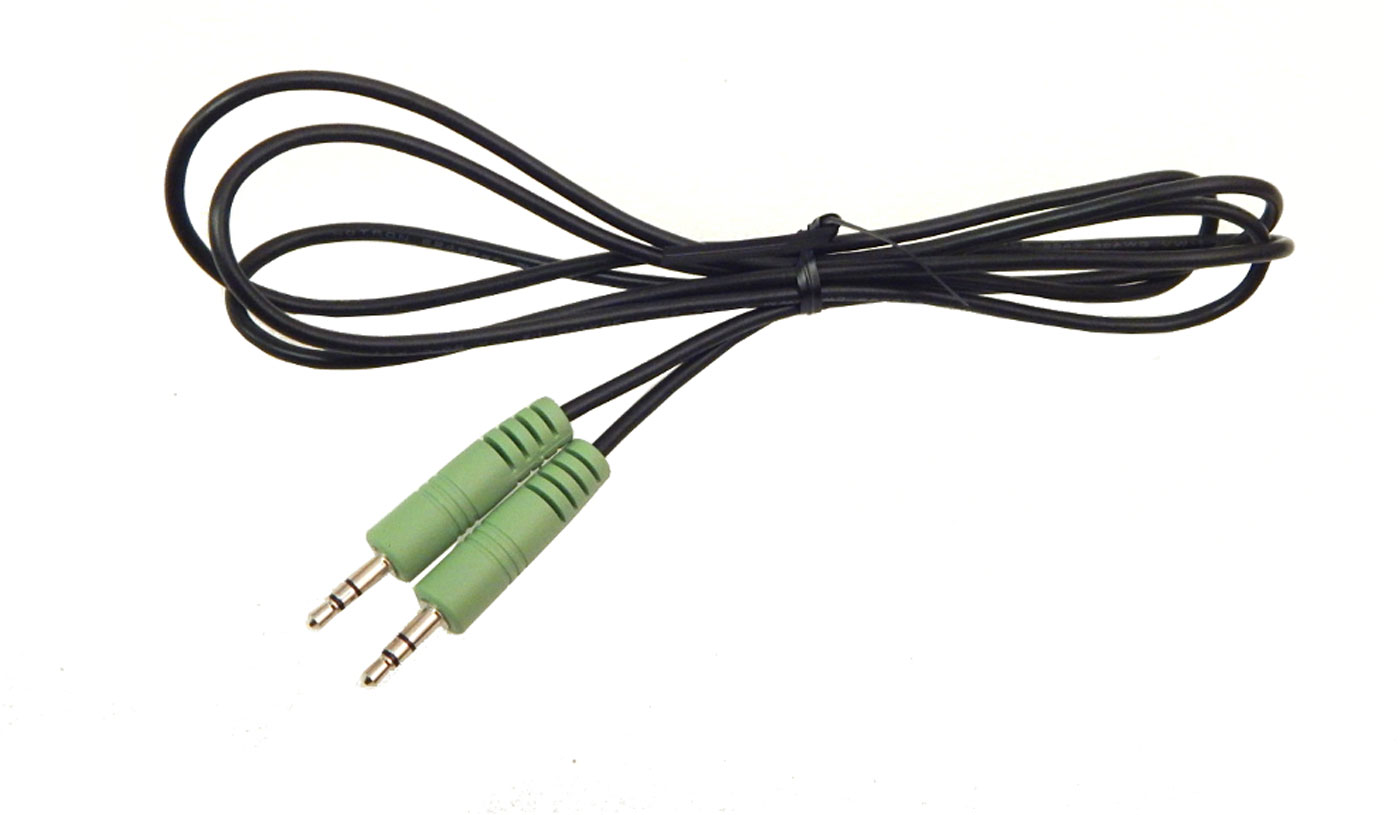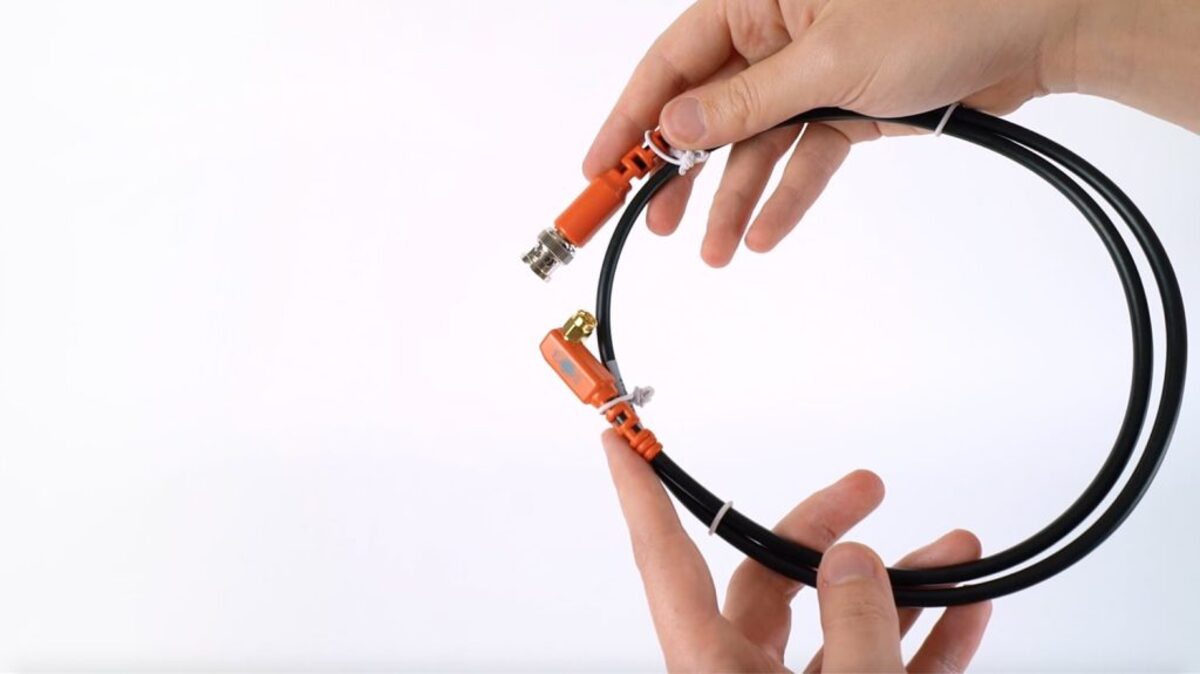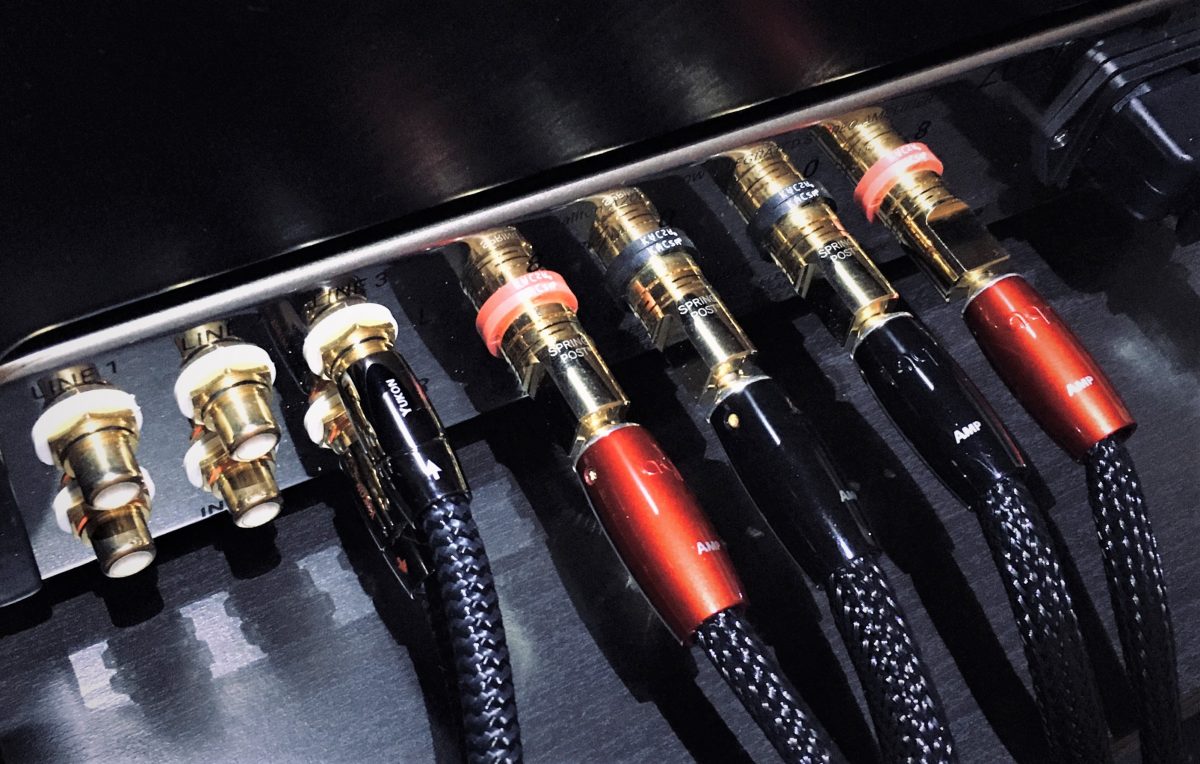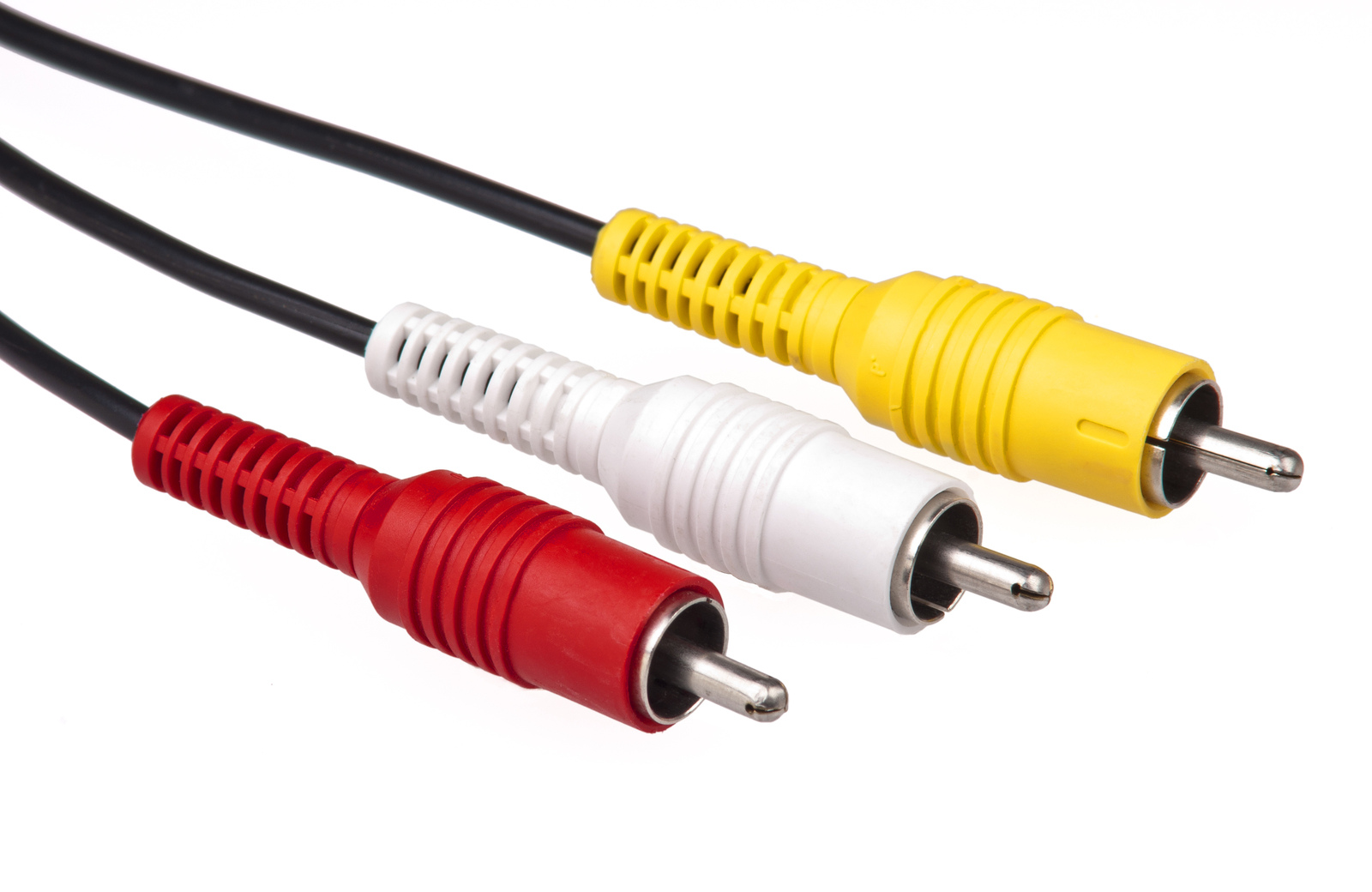Home>Production & Technology>Audio Cable>What Are The Different Types Of Audio Cable Ends Called
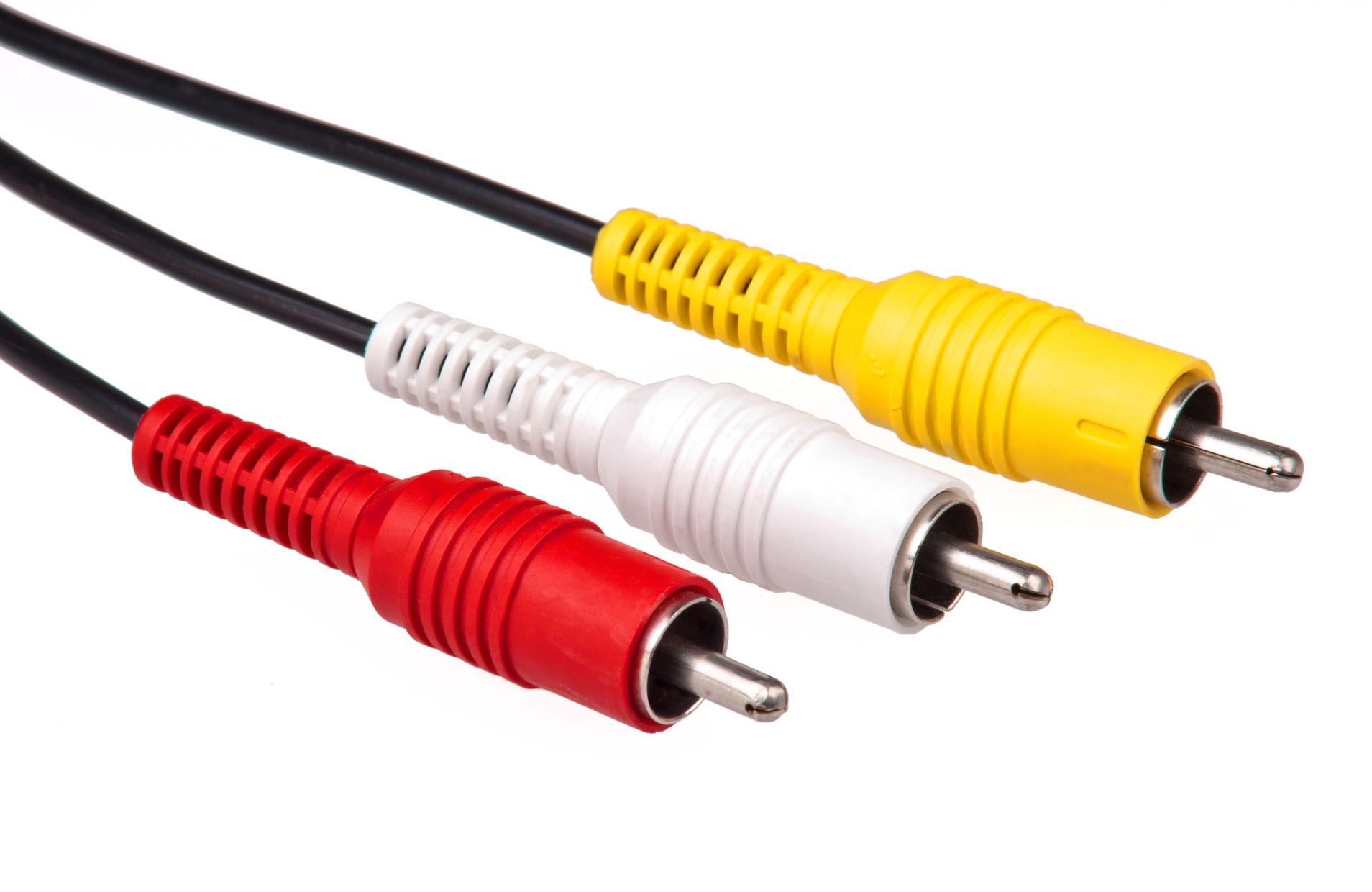

Audio Cable
What Are The Different Types Of Audio Cable Ends Called
Modified: March 7, 2024
Explore the various types of audio cable ends, known as connectors, used to connect different audio devices. Discover how audio cables play a crucial role in delivering high-quality sound.
(Many of the links in this article redirect to a specific reviewed product. Your purchase of these products through affiliate links helps to generate commission for AudioLover.com, at no extra cost. Learn more)
Table of Contents
XLR Connectors
XLR connectors are widely used in professional audio applications. They are known for their robustness, reliability, and ability to transmit balanced audio signals. The XLR connector features three pins surrounded by a metal shell. These pins are responsible for carrying the audio signals.
The three pins in an XLR connector are typically designated as follows:
- Pin 1: Ground or shield
- Pin 2: Positive or hot wire
- Pin 3: Negative or cold wire
The XLR connector is designed to provide a balanced connection, which helps reduce noise and interference in the audio signal. This makes it an ideal choice for professional audio systems, such as microphones, mixers, and audio interfaces.
One of the unique features of XLR connectors is their locking mechanism. The male connector has a protruding latch, while the female connector has a hole to receive the latch. This ensures a secure and sturdy connection, preventing accidental disconnections during use.
XLR connectors are available in different variations, including 3-pin, 4-pin, and 5-pin configurations. The 3-pin XLR is the most commonly used in audio applications.
Furthermore, XLR connectors can be found in both male and female versions. The male XLR connector typically features pins and a metal housing, while the female XLR connector has receptacles and a metal shell. These connectors can easily be connected and disconnected, making them user-friendly and convenient to use.
Overall, XLR connectors are a popular choice for professional audio applications due to their durability, balanced signal transmission, and secure locking mechanism. Whether you are setting up a recording studio, live sound system, or audio equipment for an event, XLR connectors are an essential component to ensure high-quality audio connections.
TRS Connectors
TRS connectors, also known as Tip-Ring-Sleeve connectors, are widely used in both professional and consumer audio applications. They are known for their versatility and ability to transmit balanced or stereo signals. The TRS connector consists of three sections: the tip, the ring, and the sleeve.
The tip of the TRS connector carries the left or positive audio signal in a stereo connection. The ring carries the right or negative audio signal in a stereo connection, while the sleeve serves as the ground or shield connection. In a balanced connection, the tip carries the positive signal, the ring carries the negative signal, and the sleeve serves as the shield.
TRS connectors are commonly used for various audio equipment, including headphones, instruments, speakers, and audio interfaces. They provide a reliable connection, allowing for clear and accurate audio transmission.
One of the notable features of TRS connectors is their ability to transmit both balanced and stereo signals. This versatility makes them a preferred choice in many professional audio settings. For example, a TRS cable can be used to connect a stereo headphone to a mixing console, or it can be used to connect balanced outputs and inputs on audio interfaces or amplifiers.
TRS connectors come in different sizes, with the most common being the 1/4-inch (6.35mm) and 3.5mm (1/8-inch) variants. The 1/4-inch TRS connector is commonly found in professional audio equipment, while the 3.5mm TRS connector is commonly used in consumer electronics such as smartphones, laptops, and portable music players.
It is important to note that TRS connectors should not be confused with TS (Tip-Sleeve) connectors. While both connectors look similar, TRS connectors offer an additional ring section for transmitting stereo or balanced signals, whereas TS connectors are mainly used for mono or unbalanced signals.
In summary, TRS connectors are versatile audio connectors that can transmit both balanced and stereo signals. They are widely used in various audio applications due to their reliability and compatibility with a wide range of audio devices. Whether you are a musician, sound engineer, or an audio enthusiast, understanding and using TRS connectors is essential for achieving optimal audio quality.
TS Connectors
TS connectors, also known as Tip-Sleeve connectors, are commonly used in audio applications to transmit mono or unbalanced signals. They are simple and straightforward connectors that consist of two sections: the tip and the sleeve.
The tip of the TS connector carries the audio signal, while the sleeve serves as the ground or shield connection. With only two sections, TS connectors are primarily used for mono audio connections where only one audio channel is required.
TS connectors are commonly found in various audio devices, including electric guitars, amplifiers, musical instruments, and other audio equipment. They provide a reliable and easy-to-use connection for transmitting mono signals.
One of the main advantages of TS connectors is their compatibility with a wide range of audio equipment. For example, a TS cable can be used to connect an electric guitar to an amplifier, allowing the guitar signal to be amplified and heard through speakers or headphones.
TS connectors come in different sizes, with the 1/4-inch (6.35mm) and 3.5mm (1/8-inch) variants being the most common. The 1/4-inch TS connector is widely used in professional audio equipment, while the 3.5mm TS connector is commonly found in consumer electronics such as smartphones, laptops, and portable audio devices.
It’s important to note that TS connectors are not suitable for transmitting balanced signals. If you require a balanced audio connection or need to transmit stereo signals, it’s recommended to use TRS (Tip-Ring-Sleeve) or XLR connectors instead.
When using TS connectors, it’s essential to ensure a secure and proper connection. The tip of the TS connector should be aligned and inserted fully into the corresponding input or output jack to avoid any loose connections or signal dropouts.
In summary, TS connectors are simple, mono audio connectors commonly used in audio devices where only one audio channel is required. They provide a reliable and compatible connection for transmitting mono signals. Whether you’re a musician, audio engineer, or an audio enthusiast, understanding and using TS connectors is crucial for connecting audio equipment and achieving clear and accurate sound reproduction.
RCA Connectors
RCA connectors, also known as phono connectors, are widely used in audio and video applications. They are named after the Radio Corporation of America, which popularized their use in the 1940s. RCA connectors consist of a central pin surrounded by a circular metal shell, creating a reliable and sturdy connection.
RCA connectors are primarily used for analog audio and video signals. They are commonly found in home audio systems, stereo receivers, DVD players, televisions, and other audio-visual equipment.
The RCA connector system typically uses two connectors: one for the left channel (white or black) and one for the right channel (red). These connectors can be easily plugged in and removed, making them user-friendly and convenient.
While RCA connectors are commonly used for stereo audio signals, they can also be used for mono audio connections by utilizing only one of the two channels. Additionally, RCA connectors can transmit composite video signals by using the yellow RCA jack.
One of the advantages of RCA connectors is their universal usage and compatibility. They are widely supported across various audio and video devices, allowing for easy connectivity between different components.
It is important to note that RCA connectors are primarily designed for consumer-level applications and may not be suitable for professional audio needs. However, they can still deliver good audio quality for home theater setups, gaming consoles, and other similar applications.
When connecting RCA cables, it is important to ensure a proper and secure connection. The connectors should be inserted fully into the corresponding jacks, and any loose connections should be avoided to prevent signal loss or interference.
In summary, RCA connectors are commonly used in audio and video applications for transmitting analog signals. They are versatile, widely supported, and user-friendly, making them an essential connector choice for home audio systems, televisions, and various audio-visual devices.
BNC Connectors
BNC connectors, short for Bayonet Neill-Concelman connectors, are commonly used in video and RF (radio frequency) applications. They are known for their secure and reliable connections, which make them popular in industries such as broadcasting, telecommunications, and security systems.
The BNC connector features a bayonet-style locking mechanism. This unique design allows for a quick and secure connection by simply pushing and twisting the connector into place. The bayonet lock ensures a tight and stable connection, preventing accidental disconnections.
BNC connectors are primarily used for transmitting video signals, particularly in professional video production and surveillance systems. They are often found on devices such as cameras, monitors, video switchers, and video capture cards.
Another significant application of BNC connectors is in RF connections, such as in coaxial cables used for transmitting radio frequency signals. They are commonly used in networking equipment, oscilloscopes, and high-frequency test and measurement devices.
BNC connectors usually have a characteristic impedance of 75 ohms or 50 ohms, depending on the application. The 75-ohm variant is typically used for video signals, while the 50-ohm variant is suitable for RF and networking applications.
One advantage of BNC connectors is their ability to provide a secure and stable connection for high-frequency signals. Their design minimizes signal loss and interference, ensuring reliable transmission of video and RF signals.
It’s important to note that BNC connectors are not as commonly used in consumer-level audio-video applications compared to RCA or HDMI connectors. However, they still play a vital role in professional settings where reliable connections and high signal integrity are crucial.
When connecting BNC cables, it is important to align the connector properly and securely fasten it with a twist. Loose connections can result in signal degradation or loss. Additionally, it is recommended to use BNC cables with the appropriate impedance for the specific application to ensure optimal signal transmission.
In summary, BNC connectors are widely used in video and RF applications, providing secure and reliable connections for transmitting signals. Their bayonet-style locking mechanism and low signal loss make them suitable for professional video production, surveillance systems, and high-frequency applications. Whether you are working in broadcasting or setting up a security system, BNC connectors are an essential component for ensuring robust and high-quality signal transmission.
5mm Connectors
3.5mm connectors, also known as mini-jack or headphone jacks, are commonly used for audio connections in a variety of devices. They have become ubiquitous in consumer electronics, including smartphones, laptops, portable music players, headphones, and car audio systems.
The 3.5mm connector is a small, cylindrical plug with three metal sections: the tip, the ring, and the sleeve. The tip carries the left audio channel, the ring carries the right audio channel, and the sleeve serves as the ground connection.
One of the main advantages of 3.5mm connectors is their compact size, which allows for convenience and portability. They are easy to plug in and remove, making them ideal for portable audio devices and headphones.
3.5mm connectors are predominantly used for stereo audio connections, enabling the transmission of left and right audio channels. However, they can also support mono audio signals, where the same audio is distributed to both left and right channels.
In addition to audio signals, 3.5mm connectors can also be used for auxiliary or line-level signals. This means they can carry other types of audio signals, such as those from external microphones, musical instruments, or audio outputs from devices like televisions or computers.
While 3.5mm connectors are versatile and widely used, it’s important to note that they are not designed for high-fidelity or professional audio applications. They may not offer the same level of sound quality or shielding as other connectors like XLR or balanced TRS connectors.
When connecting 3.5mm cables, it’s crucial to ensure a secure connection. The plug should be fully inserted into the corresponding jack, and any loose connections should be avoided to prevent signal dropouts or audio distortion.
In summary, 3.5mm connectors are commonly used for audio connections in consumer electronics. They offer convenience, portability, and versatility for stereo or mono audio signals. Whether you’re plugging in your headphones, connecting an external microphone, or hooking up your smartphone to an audio system, 3.5mm connectors provide a reliable and widely compatible solution for audio connectivity.
Speakon Connectors
Speakon connectors are widely used in professional audio applications, particularly in the realm of live sound reinforcement and speaker systems. They are known for their robust construction, secure locking mechanism, and ability to handle high power levels.
The Speakon connector was designed by Neutrik, a leading manufacturer of audio connectors, specifically for loudspeaker connections. It features a unique locking mechanism that ensures a secure and reliable connection between the amplifier and the loudspeaker.
Speakon connectors are available in two, four, and eight-pole configurations. The two-pole version is commonly used for unbalanced signals or connection of passive speakers, while the four and eight-pole variants are used for balanced signals, bi-amping setups, or connection of powered speakers.
The locking mechanism of Speakon connectors provides an advantage over traditional connectors like banana plugs or bare wire connections. It eliminates the risk of accidental disconnection, especially in environments where movement or vibrations may occur, such as concerts or live events. The connector is inserted and locked into place by simply twisting it, ensuring a solid and secure connection.
Another noteworthy feature of Speakon connectors is their ability to handle high power levels. They are designed to accommodate the demands of professional audio systems, delivering powerful and clear sound. The wide pins and dedicated contact area minimize signal loss and provide reliable audio transmission.
Speakon connectors are commonly found on amplifiers, loudspeakers, and stage monitors. They provide a convenient and efficient way to connect and disconnect speakers in a professional audio setup.
It’s important to note that Speakon connectors are not compatible with other standard audio connectors. This ensures that they are used correctly and avoids any accidental connection of incompatible equipment. However, some adapters are available to convert Speakon connectors to compatible connections if needed.
In summary, Speakon connectors are designed for professional audio applications, providing a secure and reliable connection for loudspeakers. Their locking mechanism, high power handling, and dedicated contact area make them suitable for use in demanding live sound environments. Whether you’re setting up a concert stage, a sound system for a venue, or a studio monitoring system, Speakon connectors offer a dependable solution for connecting your loudspeakers and delivering high-quality audio performance.
Banana Connectors
Banana connectors, also known as banana plugs, are frequently used in audio applications to create reliable and secure electrical connections. They are commonly found in speaker systems, amplifiers, receivers, and other audio equipment.
Banana connectors feature a cylindrical metal pin with a spring-loaded collar or a screw-type terminal. The pin is inserted into the corresponding receptacle, creating a solid contact and ensuring a low-resistance electrical connection.
One of the main advantages of banana connectors is their convenience and ease of use. They provide a quick and hassle-free way to connect and disconnect audio cables, minimizing the risk of loose connections or accidental disconnections.
Banana connectors are commonly used for connecting speaker wires to amplifier terminals or speaker binding posts. They offer a secure fit and reliable electrical contact, allowing for efficient and high-quality signal transmission.
These connectors are designed for use with bare speaker wire or with speaker cables that have been terminated with banana plugs. The spring-loaded collar or screw terminal allows for easy insertion and provides a secure grip on the wire, eliminating the need for soldering or crimping.
It’s important to note that banana connectors are not often used in professional audio applications or high-power setups. They are more commonly found in consumer-grade audio equipment and home theater systems.
Furthermore, banana connectors are not suitable for balanced audio signals. They are primarily used for unbalanced connections to speakers or amplifiers, where positive and negative terminals are used to transmit the audio signal.
In summary, banana connectors are popular for their convenience and ease of use in audio applications. They provide a reliable and secure connection between speaker wires and audio equipment, offering an efficient solution for connecting speakers and amplifiers in home audio setups. Whether you are setting up a stereo system or a home theater, banana connectors offer a user-friendly option for connecting your audio components and enjoying high-quality sound.
Optical Connectors (TOSLINK)
Optical connectors, specifically TOSLINK connectors, are widely used for transmitting digital audio signals in home theater systems, soundbars, gaming consoles, and other audio devices. TOSLINK, which stands for “Toshiba Link,” was developed by Toshiba in the 1980s as a standardized optical audio interface.
TOSLINK connectors utilize fiber optic cables to transmit digital audio signals in the form of light pulses. They are designed to provide a reliable and interference-free connection for high-quality audio transmission.
One of the main advantages of TOSLINK connectors is their ability to transmit high-fidelity audio signals without any loss or degradation. Unlike traditional analog connections, TOSLINK utilizes a digital audio signal, which eliminates the potential for signal quality deterioration over long distances.
TOSLINK connectors are typically found in two variations: the square-shaped connector and the mini/compact connector. The square-shaped connector is commonly used in home theater receivers, DVD players, and other audio-video equipment, while the mini/compact connector is often found on soundbars and portable audio devices.
These connectors support various digital audio formats, including PCM (Pulse Code Modulation), Dolby Digital, DTS (Digital Theater Systems), and many others. They can transmit multi-channel surround sound signals, making them excellent choices for immersive audio experiences.
When using TOSLINK connectors, it’s important to handle the cables with care to avoid damaging the delicate fiber optics inside. Additionally, TOSLINK cables should be kept away from sharp bends and excessive tension to maintain optimal performance.
It’s worth noting that TOSLINK connectors are not suitable for all audio applications. They are primarily used for digital audio signals, and they do not support analog audio transmission. If you need to connect analog audio equipment, alternative connectors such as RCA or TRS may be more appropriate.
In summary, TOSLINK connectors provide a reliable and high-quality solution for transmitting digital audio signals. They offer interference-free audio transmission, support various audio formats, and are commonly used in home theater systems and audio devices. Whether you are enjoying movies on your home theater or gaming with immersive sound, TOSLINK connectors enhance your audio experience by delivering pristine digital audio signals.
USB Connectors
USB connectors, short for Universal Serial Bus connectors, are widely used for connecting various devices to computers, laptops, and other electronic devices. They have become the standard interface for data transfer and power supply in modern technology.
The USB connector is a rectangular-shaped plug with a varying number of pins or contacts, depending on the USB version. The most common types of USB connectors are Type-A, Type-B, and Type-C.
Type-A USB connectors are the familiar rectangular plugs found on computers and chargers. They are commonly used for connecting peripherals such as keyboards, mice, printers, and external hard drives.
Type-B USB connectors come in different shapes and sizes, but they are typically square-shaped with beveled corners. They are commonly used for connecting devices like printers, scanners, and audio interfaces to computers or USB hubs.
Type-C USB connectors are small, reversible plugs that have gained popularity in recent years. They can be inserted in any orientation, making them convenient to use. Type-C connectors also support faster data transfer speeds and can deliver more power, making them suitable for devices like smartphones, tablets, and laptops.
USB connectors provide multiple functionalities. They can transmit data, such as files, music, videos, or documents, between devices. USB connections also provide power, allowing devices to charge or be powered directly through the USB port.
USB connectors have undergone several revisions over the years, resulting in different USB versions. The most common versions include USB 1.1, USB 2.0, USB 3.0 (also known as USB 3.1 Gen 1), USB 3.1 (also known as USB 3.1 Gen 2), and the latest USB 3.2. Each version offers improvements in terms of data transfer speeds and power delivery capabilities.
In addition to the three main types of connectors, there are also various USB adapter cables available to accommodate different device connections. These adapters allow for compatibility between different USB types, making it easier to connect devices with varying USB connectors.
Overall, USB connectors offer a versatile and widely supported solution for data transfer and power supply. Their convenience, compatibility, and range of applications make them an essential component in our interconnected digital world.

